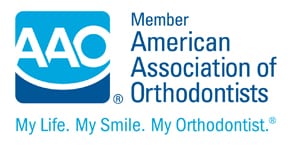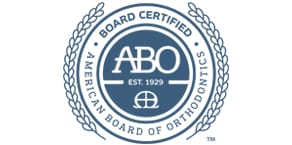It is estimated that more than 5 million people in the United States and Canada are in the care of an orthodontist. But how do you know if your child needs braces? The simplest answer is to see an orthodontist for a free consultation.
What will they look for?
Crowding
One of the most common needs for braces is crowding, which occurs in as many as 90% of patients. Crowding refers to teeth that are crooked, turned, or overlapped. It’s typically genetic and is often the result of a relatively small jaw and large teeth. Crowding may also occur if a primary tooth is lost prematurely and the surrounding teeth collapse into the space.
While a main benefit of correcting crowding is esthetics, it can also make it much easier to keep the teeth clean. More severe crowding can cause other teeth to be “blocked out”of the arch and unable to erupt normally.
Spacing
The opposite of crowding is spacing. Spacing in the primary dentition is great to see because there will be more room for the permanent teeth to erupt. Mild spacing in the permanent dentition is not much of a concern, as long as the patient is not getting food trapped in the spaces.
More moderate to severe spacing can be the result of small teeth, thumb-sucking habits, or a tongue-thrust habit, in which the front teeth are pushed apart by the tongue during swallowing. Esthetics is a major reason patients seek to correct spacing.
Overjet
Another common orthodontic condition is overjet, which is characterized by upper-front teeth that appear to “stick out”. The general public typically refers to this condition as an “overbite,” though overjet is actually the correct term.
Excessive overjet is often the result of a lower jaw that is short in proportion to the upper jaw, resulting in protruding upper teeth. An overjet due to a short lower jaw is best corrected during a patient’s growth spurt.
Protruded upper teeth can also be the result of finger- or thumb-sucking habits and should be stopped by the age of eight at the latest. Protruded or flared upper teeth are also more prone to injury.
Overbite
Orthodontists use the term “overbite” to refer to the vertical relationship of the upper and lower-front teeth. A deep overbite means that the lower-front teeth bite too closely to the gum tissue behind the upper-front teeth, which can result in excessive tooth wear, bone loss, or discomfort.
Openbite
An openbite is the exact opposite of an overbite and is characterized by the space between the upper- and lower-front teeth. An openbite may be the result of jaw relationships, a thumb-sucking habit, or a tongue-thrust habit.
Because the front teeth do not touch in an openbite, all of the chewing occurs on the back teeth. This makes a patient more prone to excessive wear on the back teeth, bone loss, and pressure on the jaw joint.
Crossbites
Crossbites are another very common orthodontic condition and occur when the upper teeth fit inside or outside of the lower teeth when biting. A crossbite can occur in the front (anterior) or back (posterior).
A posterior crossbite is more common than an anterior crossbite and usually indicates an upper jaw that is not wide enough.
The most common cause of an anterior crossbite is a lower jaw that is longer than the upper jaw, resulting in lower teeth that stick out more than the upper teeth. Genetics plays a major role in the development of anterior crossbites.
Uncorrected crossbites can lead to premature tooth wear, as well as TMJ disorder, and therefore is usually corrected at an early age.
Other Conditions
These are some of the most common orthodontic problems, but there are certainly many other reasons for needing orthodontic treatment, such as difficulty chewing or swallowing, habits, a “gummy” smile, midline concerns, TMJ disorder, esthetics, and excessive tooth wear.
The causes for these problems are as varied as the patients who have them, so it is important they be diagnosed early. The American Association of Orthodontists strongly recommends an orthodontic evaluation by the age of seven.
While many orthodontic problems can be addressed later after more eruption of the permanent teeth, other problems are best corrected at earlier stages of a patient’s growth and eruption.
Whatever the problem, the goal of orthodontic treatment is to produce a healthy, functioning, and stable bite, which creates an attractive and beautiful smile!





